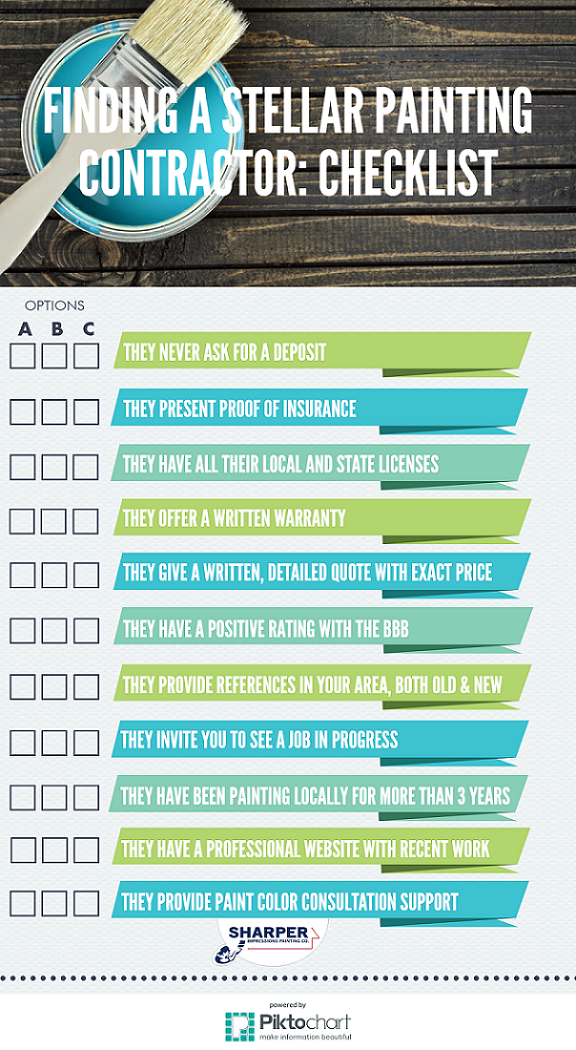Gain Insights Right Into How Weather Conditions Can Affect The Result Of Your External Painting Job, Making Certain An Expert Coating
Gain Insights Right Into How Weather Conditions Can Affect The Result Of Your External Painting Job, Making Certain An Expert Coating
Blog Article
Personnel Author-Reilly Hussain
Understanding just how climate condition can affect the outcome of an outside paint undertaking is critical for accomplishing a remarkable finish. From temperature variations changing paint attachment to moisture levels impacting drying times, each element of climate plays a significant role in the success of your task. Moreover, wind rate and rainfall can present unforeseen challenges that may compromise the quality of the outcome. As we browse via the subtleties of climate's effect on external painting, it ends up being apparent that precise preparation and critical timing are essential for ensuring a professional and durable result.
Perfect Temperature Level Range for Painting
When taking into consideration exterior painting jobs, the excellent temperature level range plays an important role in attaining ideal outcomes. Paint in the right temperature conditions guarantees that the paint adheres effectively to the surface, dries out uniformly, and remedies efficiently. Usually, the advised temperature level range for external paint is in between 50 to 85 levels Fahrenheit.
Painting in temperature levels listed below 50 degrees Fahrenheit can bring about concerns such as inadequate paint adhesion, prolonged drying times, and a raised possibility of breaking or peeling.
On the other hand, painting in temperatures over 85 degrees Fahrenheit can cause the paint to completely dry as well swiftly, bring about blistering, bubbling, and an irregular finish.
To attain the best results, it is vital to inspect the weather prediction before beginning an exterior painting task. Preferably, goal to repaint during light climate condition with moderate temperatures and reduced humidity degrees.
Effects of Humidity on Paint Drying
Humidity degrees considerably impact the drying out procedure of paint put on exterior surfaces. High moisture can lengthen the drying out time of paint, bring about prospective concerns such as leaking, streaking, or perhaps the development of bubbles on the repainted surface area. Excess wetness in the air slows down the dissipation of water from the paint, hindering the healing process. additional Info is particularly bothersome for water-based paints, as they depend on dissipation for drying out.
On the other hand, reduced humidity levels can likewise impact paint drying. Exceptionally Whole House Painting Quotes might trigger the paint to dry also quickly, causing bad attachment and a harsh coating. In such instances, adding a paint conditioner or spraying a great mist of water in the air can assist manage moisture degrees and enhance the painting result.
To ensure optimal drying out problems, it is advisable to paint when the humidity degrees range between 40% and 50%.
Monitoring moisture levels and taking proper measures can help achieve a smooth and sturdy paint coating on exterior surface areas.
Wind and Precipitation Considerations
Wind speed and precipitation are important variables that considerably affect the success of an external painting project.
When it pertains to wind, both rate and instructions are vital considerations. High wind speeds can trigger paint to completely dry also promptly, causing a poor finish with prospective concerns like splitting or irregular appearance. Furthermore, wind can lug debris that may stick to the damp paint, bring about flaws. As a result, painters need to aim to work on days with light to modest winds for ideal paint conditions.
On the other hand, precipitation, whether rainfall or snow, can be very damaging to the outcome of an exterior painting task. Dampness from rainfall can impede paint bond, creating peeling and bubbling over time. It is essential to avoid paint throughout wet or snowy weather to make certain the long life and top quality of the paint job. Painters must also permit enough time for the surface area to dry completely after any type of precipitation before beginning or resuming the painting process.
Painting A Whole House , weather play a considerable role in the result of an external painting project. The ideal temperature level array, moisture degrees, wind speed, and precipitation all add to the success or failure of the paint task.
It is vital to think about these factors and plan appropriately to guarantee appropriate paint bond, drying out times, and general quality of the ended up item.
